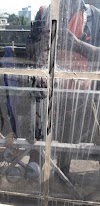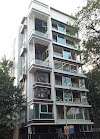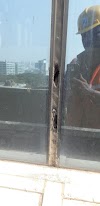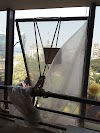About Glass in Façade
With the increase in Window Wall Ration (WWR), total heat transfer increases. For 15% WWR, contributes 41% of total heat transfer. Hence glass selection plays a very important role. Glass improves Daylighting and reduces the demand for artificial lighting. With the use of High-performance glass, it reduces air-conditioning load and also reduces overall AC load demand.
Heat gain inside the building due to direct incident radiation on glass is a Solar Factor of the glass. Total solar heat gain in a building is the sum of the Energy directly transmitted (short wave) + the direct solar energy absorbed and re-emitted inside (long wave). Solar Factor of Glass helps block short wave radiation, which is the form of Radiation emitted by the Sun.
U Value:
Heat transmittance through a surface by conduction, convection, and radiation, or Heat gain due to temperature difference, is expressed as the U–value. It is the amount of Heat transferred either gained or lost due to a temperature differential difference of 1°C between inside and outside per square meter. Lower the U-Value; lower the thermal factor of the Glass heat transfer (loss in cold countries and gain in hot countries). The rate of Heat transfer or U-value is controlled by double glazing by using gas inside the cavity or by using low-E glass for the inside pane of the glazed unit.
Relative Heat Gain:
Total heat gain is also called Relative Heat gain. It is the amount of Heat energy transmitted due to direct solar radiation incident and Heat transferred due to temperature differential. Its unit is Watts per Sq. m.
Ultraviolet Transmittance:
The percentage of incident ultraviolet energy that is directly transmitted through the glass. Clear glass allows up to 72% and tinted glass around 40% of UV to pass through depending on its thickness.
Sound Transmission:
The sound attenuation of any material depends on its mass, stiffness, and damping characteristics. It varies with glass thickness
Visible Light Transmittance:
Percentage of Visual Light transmitted through the glass. Clear glass has 75 to 92 % VLT.
It depends on the type and position of the Coating used on glass. Lower external reflection helps in the true color appearance of the building. It is normally suggested to have lower internal reflection to minimize glare at Night
Sun Path analysis:
It is important for Creating Passive strategy for the buildings both for heating and cooling requirement type, understanding the impact of orientation of buildings and determining the best orientation, understanding the impact of seasonal changes in the building and its surroundings, designing appropriate artificial shading devices, and selecting glass and other building material for passive design strategy.
It decides which area will be exposed to the Sun throughout the day in a whole year and gives the impact of the Sun, which is heat in daytime. Façade type can be decided based on this. Glass with the correct U-value and requirement of Shading can be decided based on this.
Daylight Analysis:
According to the Shape and surroundings of the building, the Façade may get some shadows. Even interior also Sunshade devices can even be used to reflect the sunlight more into the interior.
Thermal Analysis:
Heat load calculation, and AC tonnage requirement of the Premises help to determine the Selection of Glass and further Payback.
Selection of the Correct glass according to its location of installation is mandatory. Cost of Glass also varies according to the type of Glass
Type of Glasses:
Tempered glass:
Tempered glass is a type of safety glass that is treated with heat and chemicals to increase its strength and durability. It is often used in façade glass applications because it is more resistant to breakage than standard annealed glass.
Laminated glass is made by sandwiching a layer of plastic between two layers of glass. It is often used in façade glass applications because it is stronger and more resistant to breakage than standard glass. In the event of breakage, the plastic layer helps to hold the glass in place, reducing the risk of injury.
Low-E glass:
Low-E (low-emissivity) glass is a type of glass that is coated with a thin layer of material that helps to reflect heat and reduce the amount of ultraviolet (UV) and infrared (IR) light that passes through the glass. It is often used in façade glass applications to improve the thermal performance of the building.
Insulated glass:
Insulated glass is made by sandwiching a layer of air or gas between two layers of glass. It is often used in façade glass applications to improve the thermal performance of the building.
Tinted glass:
Tinted glass is a type of glass that has a colored coating applied to it, which can help to reduce glare and heat gain in a building. It is often used in façade glass applications to improve the comfort of building occupants. In green Tinted glass, the color of light transmitted is similar to clear glass.
Reflective glass:
Reflective glass is a type of glass that has a reflective coating applied to it, which can help to reduce glare and heat gain in a building. It is often used in façade glass applications to improve the thermal performance of the building.
Frosted glass:
Frosted glass is a type of glass that has a frosted or etched surface, which can help to diffuse light and reduce glare. It is often used in façade glass applications to provide privacy or to create a decorative effect.
Patterned glass:
Patterned glass is a type of glass that has a pattern or design etched into its surface. It is often used in façade glass applications to provide privacy or to create a decorative effect.
Ceramic Frit Glass:
Ceramic enamel frit contains finely ground glass mixed with inorganic pigments to produce a desired color. The coated glass is heated to about 620° C. This makes a ceramic coating almost as tough as the glass itself. A durable fired ceramic frit restricts scratching, chipping, peeling, fading, and chemical attacks. Ceramic frit is available in various colors, usually applied to the surface 2 i.e., the inner face of glass.
Issues with Glass
Glass is a fragile material. It can be fatal if not used properly.
If toughened glass or Heat-strength glass gets hit on the edges, it breaks with its respective pattern of breakage.
Performance glass has wastage depending on the size to be installed. The client purchases the required sizes from the sheet of coated glass, but the remaining area of glass goes to waste unless the same requirement comes from another client, which can be cut from the same sheet of glass.
NiS inclusion causes sudden breakage in Toughened glass.
To get the perfect shape of the required glass offset from the original edges, it is necessary to take it while cutting the glass.
During the production of toughened glasses, distortion occurs that gives a wavy image. Such wavy images can be seen from outside over the surface of glass on the building.
It is difficult to get a glass of the same shade when one or more glasses get broken. Some of the suppliers supply the glasses when they are purchased in bulk quantity. Else it adds heavy cost for a small quantity of glasses.
Glass Selection Parameter
Director,
Landscape Wall Systems
9819 663 630












0 Comments